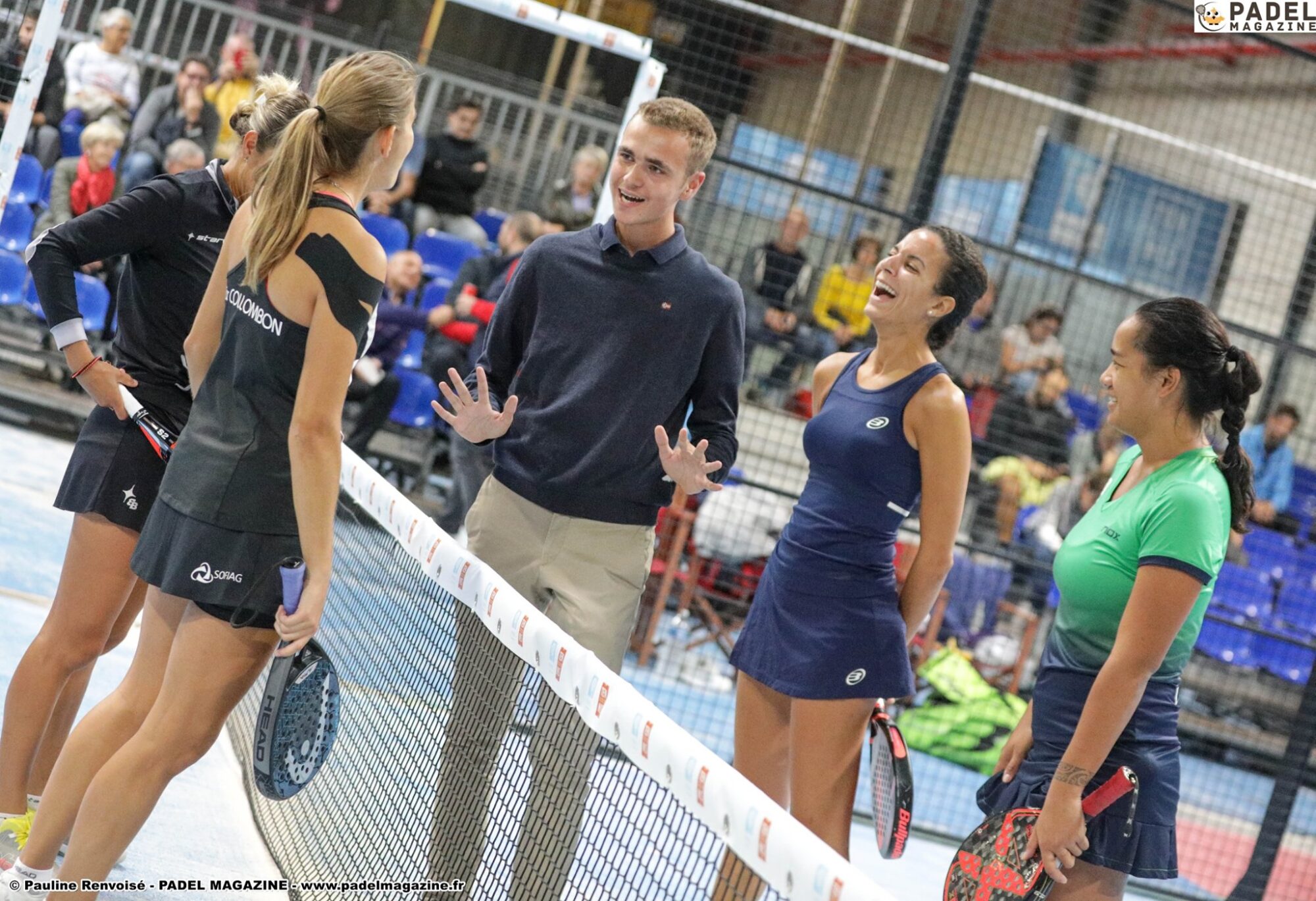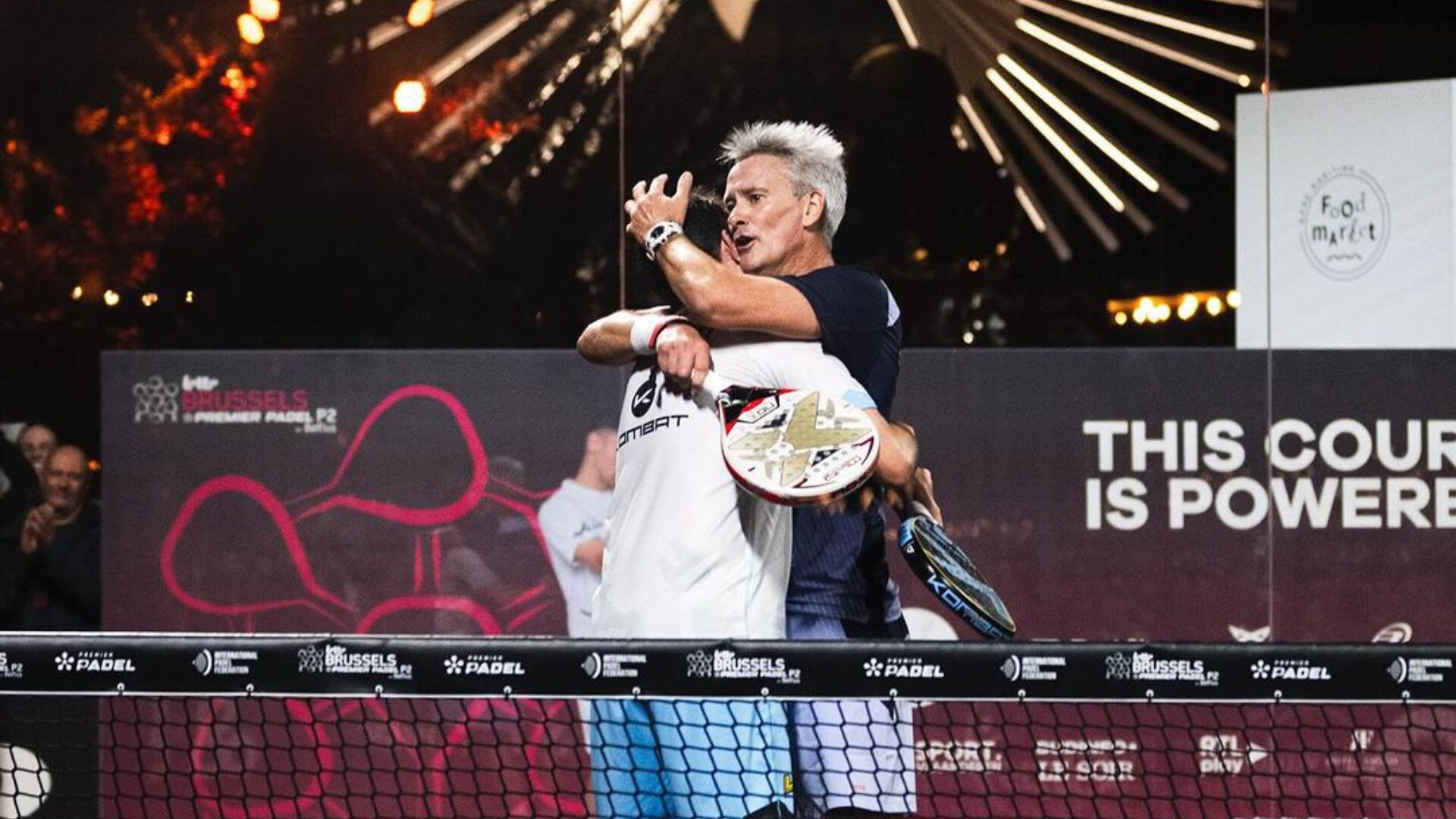Are you the nervous type on the pitch? Have you ever received penalty points? In this final part of our file devoted to arbitration at padel, we will explain the code of conduct to follow in the field. You will understand what you can or cannot do during a game.
Who can be sanctioned through the code of conduct?
- The players.
- Captains or alternate captains in team competitions.
- Coaches when they are authorized.
Who can apply the code of conduct?
The Referee, the track supervisor, or the referee if there is one.
Are the Code of Conduct sanctions applicable to each player independently of their partner or to each pair?
To each pair.
What are the facts relating to the application of the code of conduct for players?
- ball throw
- racket throw
- racket strike on the ground, the net, the grids, the windows, etc.
- inappropriate language
- inappropriate gesture
- intentional embarrassment of opponents by words, noises or gestures
- deliberate failure to respect the continuity of play between two points or after a change of sides, in particular due to a natural loss of physical condition, injury or refusal to resume the game on the order of the referee
- leaving the field without authorization from the referee, supervisor or the Referee
- advice or care not authorized by the provisions of the rules of the game or sporting regulations
- repeated challenges to referee's decisions
- any form of unsportsmanlike behavior, especially during a game played without a referee
What are the Code of Conduct sanctions against players?
- 1st offence: warning
- 2nd offence: 1 penalty point
- 3rd offence: 3 penalty points
- 4th offence: disqualification.
Disqualification can only be pronounced by the Referee (whether or not requested by the referee).
In the event of physical violence or serious misconduct (insult, threat, obscenity, etc.), the referee or the Referee may, without prior warning or penalty point, directly inflict three penalty points; the Referee can even directly disqualify the offending player, and therefore the pair.
In team competitions, what are the facts relating to the application of the code of conduct for captains and assistants?
- inappropriate language
- inappropriate gestures
- intentional embarrassment of opponents, by words, noises or gestures
- advice or care not authorized by the rules of the game or sporting regulations
- contesting the referee's decisions
- any form of unsportsmanlike behavior
What are the penalties under the code of conduct against captains?
- 1st offence: warning
- 2nd offence: warning
- 3rd offence: disqualification for the game.
They can only be pronounced by the referee (at the request of the referee or not). In the event of physical violence or serious misconduct (insult, threat, obscenity, etc.), the referee may, without prior warning, pronounce disqualification.
Are sanctions possible for a player, a coach, or a captain off the pitch? By whom will they be applied?
– Yes, against any behavior undermining the security and/or integrity of persons and/or property, threats or insults.
– By the Referee.
What are the possible sanctions off the pitch?
- 1st offence: warning
- 2nd offence: warning
- 3rd offence: disqualification from the competition or the match.
When this behavior appears to him to be particularly serious, the referee may, without warning, directly pronounce the disqualification.
What is an unintentional timeout?
It is a non-respect of the time between 2 points or an overrun of 90 seconds during a change of side, 2 minutes during an end of round.
How is an unintentional time overrun sanctioned?
The offending pair receives a warning and then, with each subsequent violation, a penalty point. This procedure is independent of the application of the Federal Code of Conduct.
During the 1st round, the behavior of player A leads to the application of the code of conduct: warning. In the 2nd round, his partner B violently and voluntarily knocks his racket on the ground. Decision ?
Penalty point, A/B pair.
The score is 2/2 tied. Server A of the A/B pair rolls an ace. Player C of the C/D pair, who has shown exemplary behavior so far, shouts an insult. His partner D has already had, during the game, a behavior sanctioned by the Referee by a warning then by a penalty point. What will be the sanction pronounced by the Referee and on what score will the game resume?
3 penalty points against the C/D pair, the A/B pair leads 3/2 and 0/30 on the next game.
In a P1000, player A engaged in misconduct resulting in the application of the code of conduct. Later, Player B also engaged in inappropriate behavior resulting in the application of the code of conduct. Later, their coach insults the opponents of the pair of which he is the coach. Decision ?
3 penalty points against the A/B pair because the sanctions against the coach are added to those against the players.
Between 2 points, an angry player violently sends a ball to the opposing side. One of his opponents is injured by the ball and cannot resume the game. Decision ?
The pair of the player who injured his opponent outside of game action is immediately disqualified.
Player A has engaged in misconduct resulting in the application of the code of conduct. Later, B refuses to return to play following the end of medical treatment. Decision ?
Application of the code of conduct, penalty point for the A/B pair.
Is the code of conduct applicable to the warm-up?
YES, it applies from the entry of the players on the field.
After being rocked by tennis for nearly 15 years, I became an absolute fan of its cousin, the padel. For nearly a year now, I've been chasing the little yellow ball with another racquet, but with just as much passion! Based in Lyon, I intend to make you better acquainted with the padel in the region and at the national level.





































































































 Premier Padel Brussels P2 – The women’s Big 4 at the semi-finals!
Premier Padel Brussels P2 – The women’s Big 4 at the semi-finals! Premier Padel Brussels P2 – Sanz and Nieto win a big fight against Lebron / Navarro!
Premier Padel Brussels P2 – Sanz and Nieto win a big fight against Lebron / Navarro! Premier Padel Brussels P2 – The break obviously did Sanchez / Josemaria good!
Premier Padel Brussels P2 – The break obviously did Sanchez / Josemaria good! Premier Padel Sevilla P2 – From the waiting list to previas for Dylan Guichard and Ricardo Martinez!
Premier Padel Sevilla P2 – From the waiting list to previas for Dylan Guichard and Ricardo Martinez! Guillaume Codron de Sud Padel : “A family project”
Guillaume Codron de Sud Padel : “A family project” Nallé Grinda: “Democratize the padel in the USA with PadelX "
Nallé Grinda: “Democratize the padel in the USA with PadelX " Simon Boissé: “We know that there are two nations in front of us”
Simon Boissé: “We know that there are two nations in front of us” Marie Maligo: “This period of frequent changes of partners was beneficial for me”
Marie Maligo: “This period of frequent changes of partners was beneficial for me” Gilles Moretton: “We will be able to put the padel at the level of tennis”
Gilles Moretton: “We will be able to put the padel at the level of tennis” Two P1000 doubled prize money approaching!
Two P1000 doubled prize money approaching! José Manuel Escin at the inauguration of Casa Padel DOS: “Finally, and thank you!”
José Manuel Escin at the inauguration of Casa Padel DOS: “Finally, and thank you!” Miguel Lamperti: three tie-breaks and a return to the quarter-finals!
Miguel Lamperti: three tie-breaks and a return to the quarter-finals! Big evening in Brussels with two seeded players on the mat, heckled number 1s…
Big evening in Brussels with two seeded players on the mat, heckled number 1s… A1 Padel – the French Open replaces the Mexican Open on the calendar
A1 Padel – the French Open replaces the Mexican Open on the calendar Padel Score comes to Tahiti for American Express Padel Cup!
Padel Score comes to Tahiti for American Express Padel Cup! Do you know the Rafa Nadal Academy Tour?
Do you know the Rafa Nadal Academy Tour? Play at padel on his yacht? Possible for €233.000!
Play at padel on his yacht? Possible for €233.000! Our Top 10 training courses padel in France and Europe
Our Top 10 training courses padel in France and Europe At the heart of padel – Episode 25: Paul and Andoni answer your questions
At the heart of padel – Episode 25: Paul and Andoni answer your questions Tactical padel – What to do when faced with players who systematically stay at the bottom?
Tactical padel – What to do when faced with players who systematically stay at the bottom? The basic tactics of padel
The basic tactics of padel At the heart of padel – Episode 25: Paul and Andoni answer your questions
At the heart of padel – Episode 25: Paul and Andoni answer your questions At the heart of padel – Episode 23: defend the window well
At the heart of padel – Episode 23: defend the window well Prohibition on playing topless Padel : the reasons
Prohibition on playing topless Padel : the reasons FIP Tour – Going far from Europe, THE strategy to earn points!
FIP Tour – Going far from Europe, THE strategy to earn points! What is a good football player? padel ?
What is a good football player? padel ? “Lefties give me headaches when I play against them!”
“Lefties give me headaches when I play against them!” At the heart of padel – Episode 14: how to earn points in winter?
At the heart of padel – Episode 14: how to earn points in winter? A par 4 is always a winner...even if you manage to defend it!
A par 4 is always a winner...even if you manage to defend it! Carbon fiber VS fiberglass: what to choose?
Carbon fiber VS fiberglass: what to choose? How to effectively test a racket padel ?
How to effectively test a racket padel ? La padel to fight Parkinson's disease
La padel to fight Parkinson's disease Don't play with a cracked or broken racket, your body will thank you!
Don't play with a cracked or broken racket, your body will thank you! Michel Cymes: “The padel, physically, it’s serious!”
Michel Cymes: “The padel, physically, it’s serious!” Jeremy Gala: “Promote the padel among young people in Belgium remains a challenge”
Jeremy Gala: “Promote the padel among young people in Belgium remains a challenge” The French Touch Academy organizes its selection day Padel-Study
The French Touch Academy organizes its selection day Padel-Study Report on the detection and training of younger generations
Report on the detection and training of younger generations